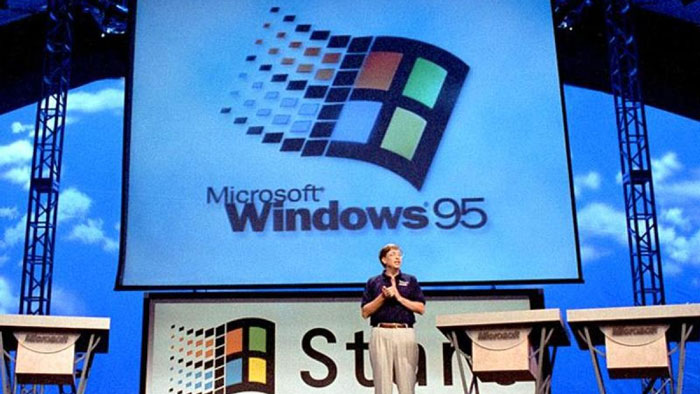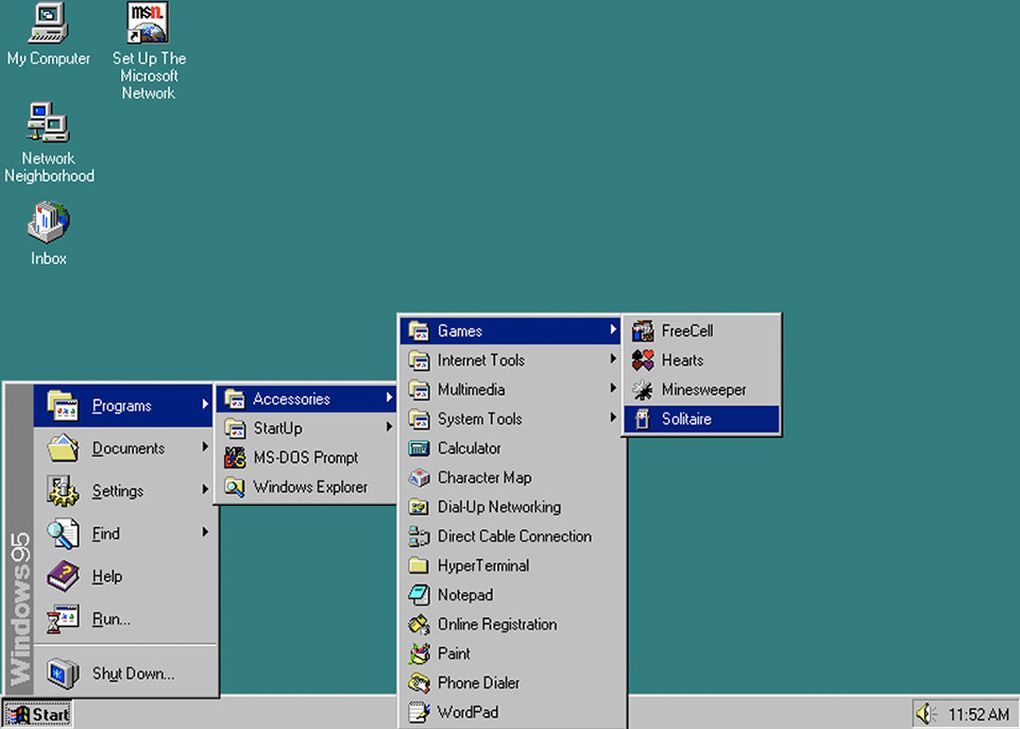20 years ago today: Microsoft Windows 95 and the home computing revolution.
When Microsoft unleashed Windows 95 to the world, on August 24th 1995, what we know today as a tech giant with a global footprint, was merely a startup with less than 18,000 employees, facing fierce competition from its arch-rival from Cupertino, Apple Computers.

The “Easiest Windows Yet” took the world by storm with what was at the time, a cutting-edge, colorful and easy-to-use desktop interface, especially with the introduction of the Start Menu and the Task Bar. However there was a lot more to these two elements that was truly revolutionary. The step from Windows 3.1’s 16-bit to the Windows 95’s 32-bit architecture was a huge milestone for home computing, which brought support for long file names and “Plug and Play” hardware detection.
Microsoft Network
By the time Windows 95 reached consumers, the Internet had been around for nearly 30 years, however what we know today as the World Wide Web, was barely a glimmer in the eyes of the innovators started in the early 1980s, and an expensive one to experience, considering that acoustic couplers were still state-of-the-art, until companies like US Robotics came up with the modern dial-up modem, which at the time featured “blazing speeds” up to 56Kbps.
Bundled with Windows 95, MSN was an application designed to provide paid access to email, newsgroups, chat rooms, and web browsing, as well as more advanced features, like “My Briefcase”, which was a system capable of synchronizing files between two Windows 95 computers, pre-dating modern-day cloud services like OneDrive by almost 15 years.
A new breed of hardware
Windows 95’s new graphical user interface wouldn’t have been as easy a sell to consumers, if it weren’t for Intel’s x86 CPU architecture as a base requirement for the new operating system to run. By the same token, as the Web turned more visually rich and graphically intensive, more powerful CPUs were released, along with higher memory and storage specs, as well as more powerful graphic capabilities and audio quality.
Suddenly, hardware manufacturers had the opportunity to tap into one of the most profitable markets. Thanks to the popularity of Microsoft Windows 95, companies like Creative Labs found saw huge demand from users looking to enhance their PCs with higher quality multimedia features.

Internet Explorer Plus!
Most users too young to remember, may think that Internet Explorer was part of Windows 95 upon launch, however, Microsoft’s flagship browser wasn’t introduced until later in the year, as part of the “Plus! for Windows 95” add-on package. The add-on was a commercial enhancement to the operating system, which included an array of multimedia applications, games, screensavers and themes.
The Plus! packs went through at least seven iterations:
- Microsoft Plus! for Windows 95
- Microsoft Plus! for Kids!
- Microsoft Plus! 98
- Microsoft Plus! Game Pack: Cards & Puzzles
- Microsoft Plus! for Windows XP
- Microsoft Plus! Digital Media Edition
- and Microsoft Plus! SuperPack for Windows XP
Veteran of the Browser Wars
At the time when Internet Explorer was introduced, Netscape Navigator was the dominant web browser, with over 90% usage share across a very young and sprouting World Wide Web, up until the mid-90s when Internet Explorer quickly gained traction among Windows users, primarily because at the time Netscape Navigator was still a commercial software, while version 2.0 of Internet Explorer was made available as a free download, in the wake of the Plus! pack release.
In the subsequent year from the first release of Windows 95, Internet explorer reached features parity with Netscape, and introduced Cascading Style Sheets, as well as multimedia plugins, in a world where web pages were mostly text, and a sparing amount of slow-loading images, and before the age of dedicated Internet broadband connections pushed for sleeker, feature-packed multimedia-enhanced web pages.
The dawn of 3D games
3D acceleration or dedicated GPUs weren’t even considered as a feature useful to home users, until the first 3D games made their appearance. Not even a year after the release of Windows 95, Microsoft Flight Simulator was released, bringing 3D to home desktops, and thrusting users into predominantly coin-operated settings.
Then and Now
Since Windows 95, Microsoft went through many iterations of its operating system, with a constant re-branding, often necessary to keep a constant pace with hardware innovations and the evolution of users. Many of those concepts first introduced with Windows 95 are still present in Windows 10, through greatly enhanced according to their times, like the Start menu, Find, and My Briefcase, precursors of the modern Live Tiles-enhanced Start menu in Windows 10, the desktop version of Cortana, and OneDrive.
“Where do you want to go today?”
Windows 95 was released with a brand new tagline, which was, interestingly enough, rather telling of the future of Microsoft’s mobile-first approach, which didn’t happen until after Satya Nadella took the helm of the company, steering it back in alignment with a world focused on smartphones, tablets and ultraportable PCs.